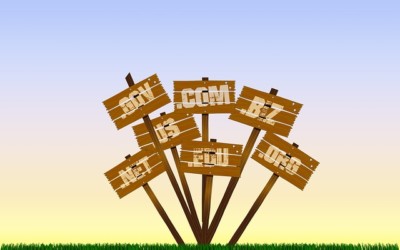The recent decision of the US Supreme Court highlights the challenges of having a brand consisting of a generic name combined with a generic top-level domain.
Generic names do not become distinctive trademarks merely by adding a top-level domain name such as .com to them. Such names are still considered non-distinctive and therefore not registrable. The EU courts have rejected several similar trademarks, such as PHOTOS.COM and BOOKS.COM.
The USPTO originally refused Booking.com BV’s trademark application. With a decision from the Supreme Court, Booking.com was granted their registration. The same trademark has already been registered in the EU since 2011.
The trademark Booking.com was originally considered non-distinctive in both the US and EU and therefore was not registrable. The mark was accepted in the EU in 2011 after Booking.com BV demonstrated that the trademark had “acquired distinctive character” through its extensive and widespread use of the mark. The US Supreme Court accepted the same principle, i.e. that through the use of the trademark it had become distinctive because consumers would associate the name with the services offered by that company (in US jargon the trademark had acquired “secondary meaning”).
In this case, the USPTO argued that generic names can never acquire distinctive character (secondary meaning). The court decided otherwise, stating that “Because “Booking.com” is not a generic name to consumers, it is not generic”. According to the evidence presented, US consumers recognized Booking.com as a brand name. This is why the registration was accepted.
“Generic.com” brands and startups
Having a “generic.com” trademark such as Booking.com is generally not recommendable for startups.
Firstly, promoting a generic name is very expensive. The more generic the name, the more difficult it is to make it stand out so that consumers or professional buyers recognize it as a brand or remember it after they’ve seen it. Generic and descriptive names are easily lost in the crowd. They need a lot of marketing to make them stand out, which of course costs money.
Secondly, getting legal protection for such brand names is very uncertain and very expensive. A cautious estimation is that the US case cost Booking.com BV hundreds of thousands of dollars. In addition, remember that they face the same problem in virtually every country in which they want to protect their brand. The cost of global trademark protection can then easily reach millions, with a lot of registration refusals in the mix despite the humongous investment.
On the other hand, if the brand is worth billions, then it is worth investing a couple of millions in protecting it. A startup brand is not worth billions, or even millions, so that kind of investment cannot be justified.
Thirdly, even if the name gets protected (after investing a lot of money in it), the protection is very narrow, and even relatively small changes in the later mark can be enough to distinguish the brands. Booking.com BV’s counsel even suggested in the oral hearings that “ebooking.com” would be sufficiently different from Booking.com. This is the challenge with trademarks that are descriptive. Even after investing a lot of money in protecting it, it is still possible for other companies to use very similar brand names. Trying to keep them at bay also requires money.
Any way you look at it, building a brand on a generic or descriptive name is challenging, costly, and uncertain. A much better choice for startups and SMEs is to choose a distinctive brand name that is unique, recognisable, and protectable.
Who are the winners and losers of the ruling?
The ruling mainly benefits large companies that have similar brand names. Examples include Weather.com and Hotels.com. As said before, smaller companies having “generic.com” brand names do not in practice benefit very much until they can demonstrate reliably that their “generic.com” brand has become distinctive and is no longer generic. To show that, they must first successfully use the brand for a long time, fend off competing names, and spend a lot of money in the registration process. So the main benefactors are larger companies that have the muscle to invest in brand promotion and protection.
The ruling might, in fact, be detrimental to startups and small businesses. Even though the scope of protection of “generic.com” brands is very narrow, it is possible that big companies will be aggressive in enforcing their brand against similarly named later and smaller brands. A threat of litigation, even if groundless, might be enough for a smaller brand to change its name. On the other hand, this problem is not unique for “generic.com” brand names but also applies to all types of trademarks.
The particular challenge with “generic.com” brand names is that in order to acquire distinctive character, the brand owner must “dominate” the space. For example, if there were equally successful businesses named “ebooking.com”, “ibooking.com”, “ebookings.com”, “bookings.com”, etc., Booking.com may not have been able to demonstrate that their brand had acquired sufficient distinctiveness.
The owners of “generic.com” brand names must rise above the other similarly named “generic.com” brand names in order to qualify for trademark protection. Here also lies the need to take action even in doubtful cases. In the receiving end are those who do not have the resources to defend themselves.
Link to the decision



